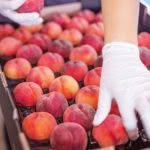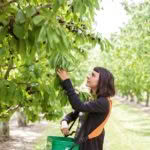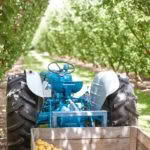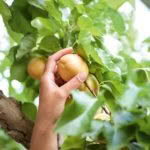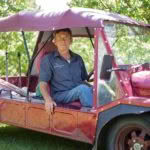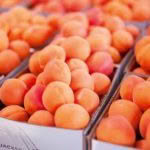A fruitful family: Five generations growing fruit in Central Otago
Five generations of a Central Otago family have tilled soil, trained trees, and fought the forces of nature and political upheaval to sustain a lifestyle they love.
Words: Kate Coughlan Photos and video: Rachael McKenna
When Kevin Jackson’s great-great grandfather Thomas Jackson disembarked from the sailing ship which had brought him from England to the colonial town of Port Chalmers, he must have praised God when he met a young lady who was entirely suitable, and willing, to be his wife.
It was the early 1860s and after their marriage the pair set off for a goldmining town 100km inland. Macraes Flat near Middlemarch was then, as it is now, the focus of strenuous efforts to wrestle gold from the ground. But gold was not the focus of this young couple.
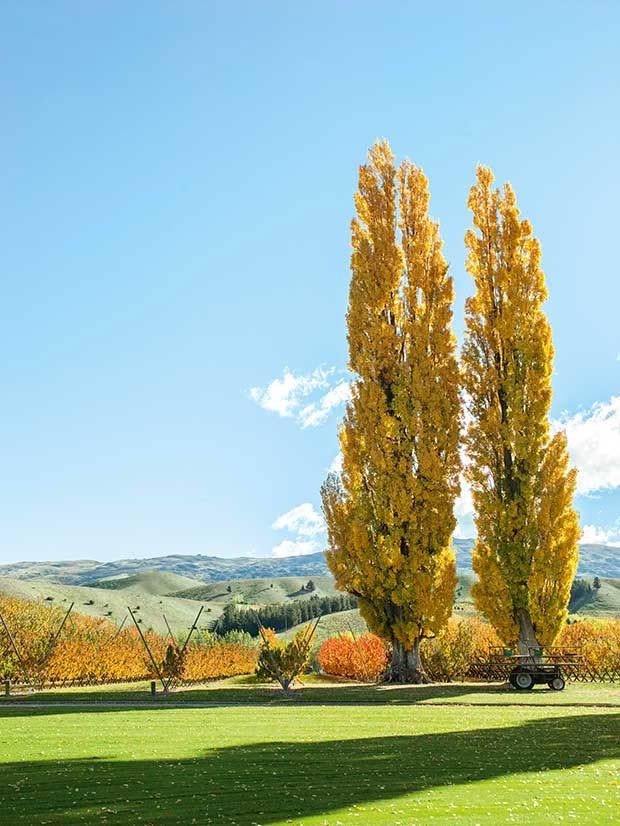
Between the Pisa Range and the Wanaka- Cromwell highway, the Jackson orchard is on land settled in the 1860s by William Jackson Barry (no relation). Though Barry’s passage to the colonies seems to have been at Her Majesty’s pleasure, he later established a butcher’s shop and became the first mayor of Cromwell.
Thomas was an Anglican minister more interested in wrestling souls into heaven than ore from the earth. However, by 1863 his ministry was in an orchard at Shaky Bridge near Alexandra and his pastoral flock became his newly planted fruit trees.
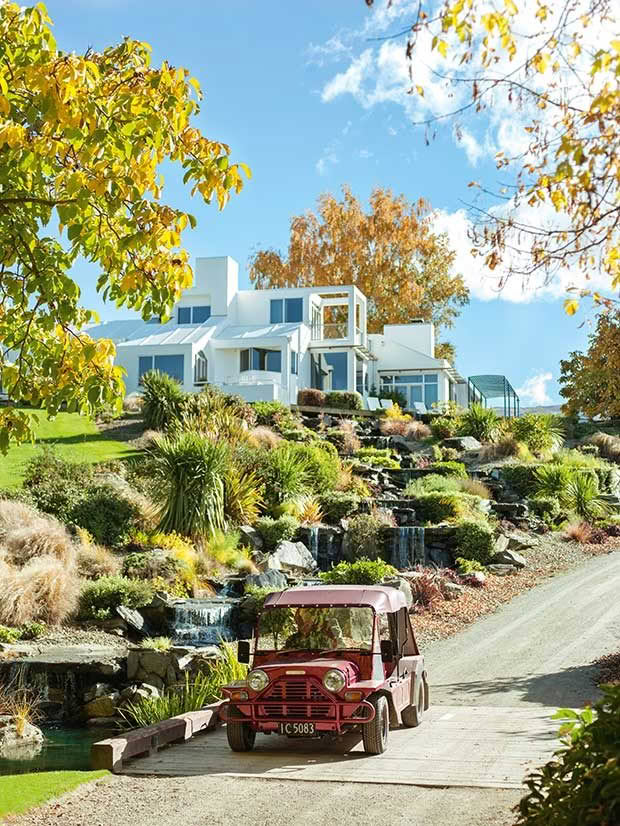
Such was the heartbreak of his English-style Cromwell Gorge home being lost to the Clyde Dam that Kevin instructed his Queenstown-based architect Michael Wyatt to design him something completely unlike his previous home. He brought nothing with him into this “modern, Greek-style” house to remind him of the old. The cascading garden was designed and implemented by Wanaka-based landscape designer Greg Hunt in time for daughter Kristin’s wedding.
There’s pride in being one of the country’s oldest orcharding dynasties and today’s generation of Jacksons, Kevin’s daughter Kristin and son Mark, as young adults each had to make a hard decision about whether it was the life for them. In the early 1980s, a huge furore erupted over the Muldoon government’s energy self-sufficiency Think Big strategy as it up-ended communities nationwide and threatened to drown the Jackson’s beloved home and orchard.

Kevin and his partner Julie Tait both work on the two family orchards.
The fierce debate about a proposed hydroelectric dam at Clyde roiled back and forth with great heat. If the high dam at Clyde was to go ahead, the resulting lake would wipe out the iconic apricot orchards of the Cromwell Gorge. As with the Springbok Tour of 1981, the debate divided communities and split families.
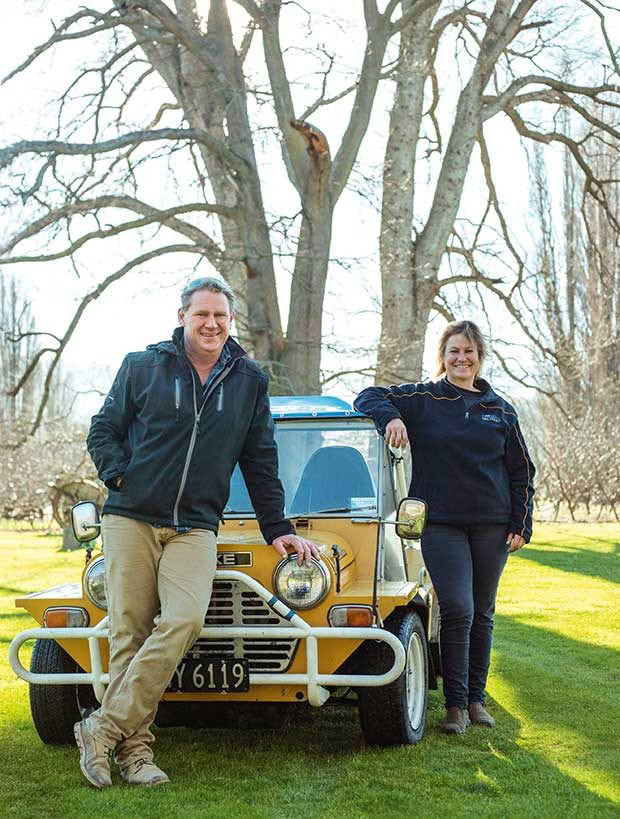
Kevin’s children Mark (who manages Jackson and Freeway Orchards) and Kristin (who manages the Freeway retail operation) also work on both family orchards.
Even in Kevin’s own close-knit clan, he and his oldest brother Bruce were on opposing sides. Their mother Doris ensured harmony reigned at the compulsory Sunday-night dinners. Doris was not to be trifled with and would put up with a lot – but not a family feud.
As a newly married couple Doris and her husband Leonard (Kevin’s parents) had fallen on hard times after leasing the family orchard in Alexandra from her parents. A very severe frost in 1936 cost the couple their entire first crop and they couldn’t pay the lease.
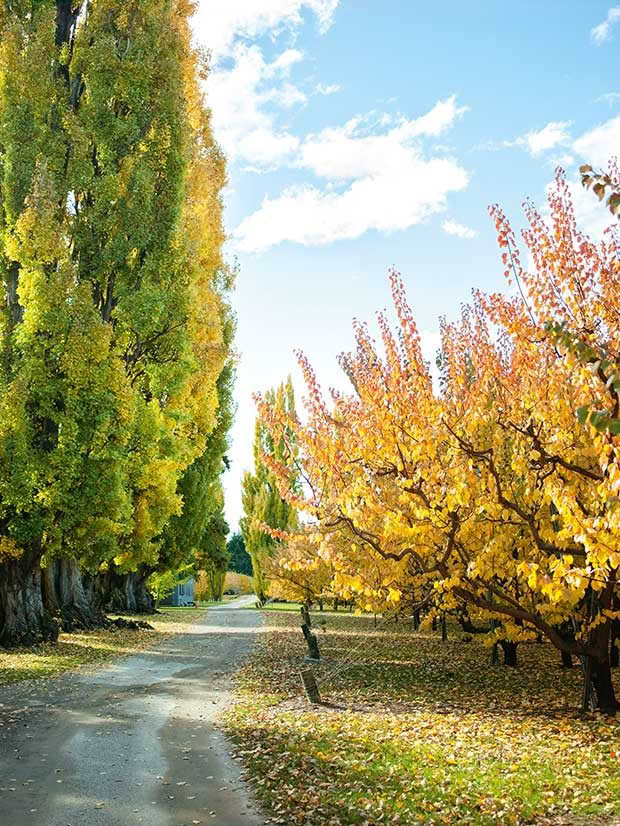
The Lombardy poplars, 150-years old, still provide good shelter.
To earn some cash they took their two young sons rabbiting in the Ardgour Valley during the winter months. On their arrival Leonard cut poplar saplings and drove them into the ground and Doris sewed together barley sacks to make rudimentary walls for their makeshift hut.
Doris cared for the family while Leonard trapped and shot rabbits. She gutted, skinned and packed rabbit carcasses into wooden crates which had each originally held two four-gallon kerosene tins.
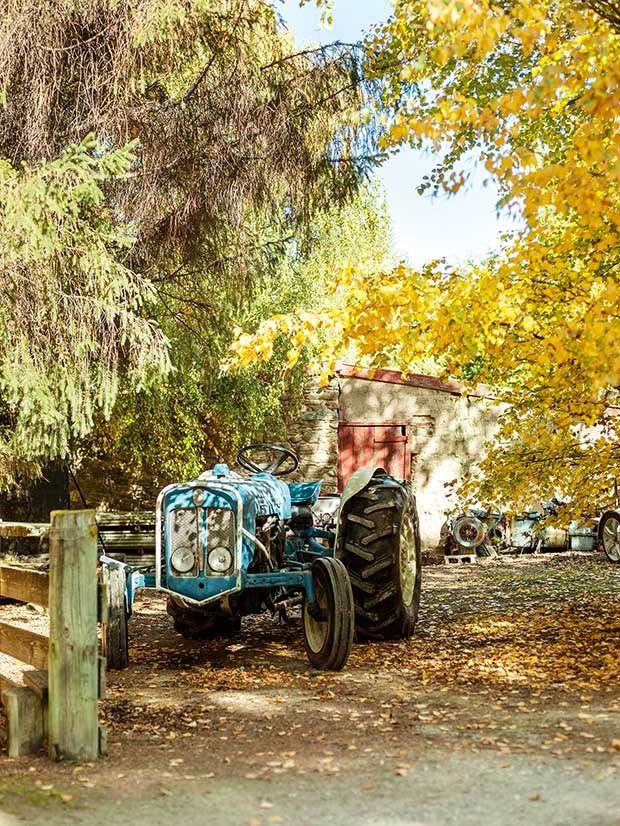
All 26 tractors on the orchards, including this Fordson Dexta, are either Ferguson or Fordson.
Once a crate was filled, she perched it on the bars of her bicycle and, with her five-year-old on the back carrier and two-year-old in the front basket, biked six-and-a-half kilometres to Tarras to deliver their eldest son, Bruce, to school and the crate of rabbit carcasses to the Road Services bus.
The bus met the Lyttelton ferry for overnight delivery to Wellington where they were sold at the next-morning Townsend and Paul auctions.
In that pre-chicken world, rabbits fetched a pretty enough price for Doris and Leonard to meet the orchard lease and prepare it for the next season.
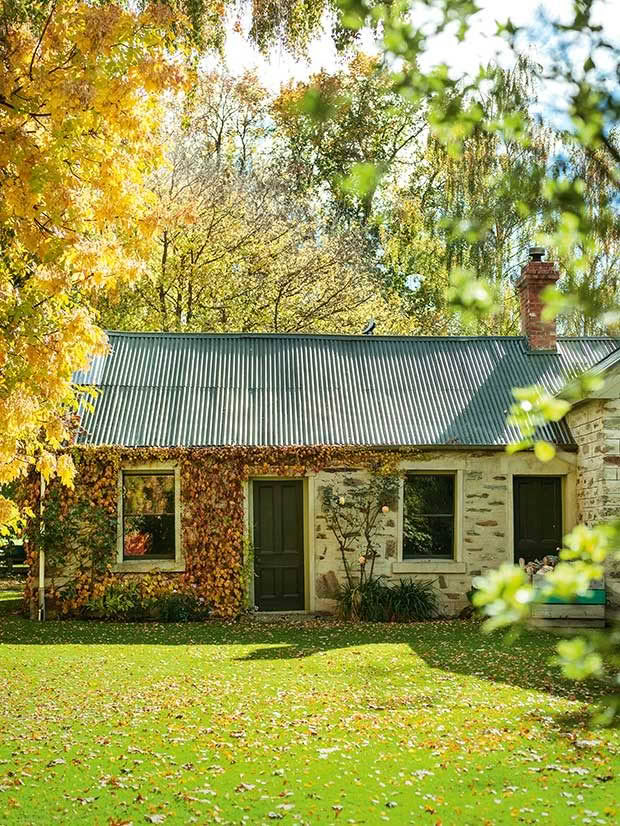
The original Jackson Barry homestead, was built in 1863, and is now Mark’s home.
If you were Doris, it’d be hard to see what in the world other people had to complain about, wouldn’t it? But then Road Services advised Doris she’d have to pack her rabbit carcasses into smaller crates as the kerosene ones were too heavy for their men to handle.
For four years Doris and Leonard kept up their rabbit licence working each winter in challenging conditions in the Ardgour before returning to the orchard in Alexandra to do another season.
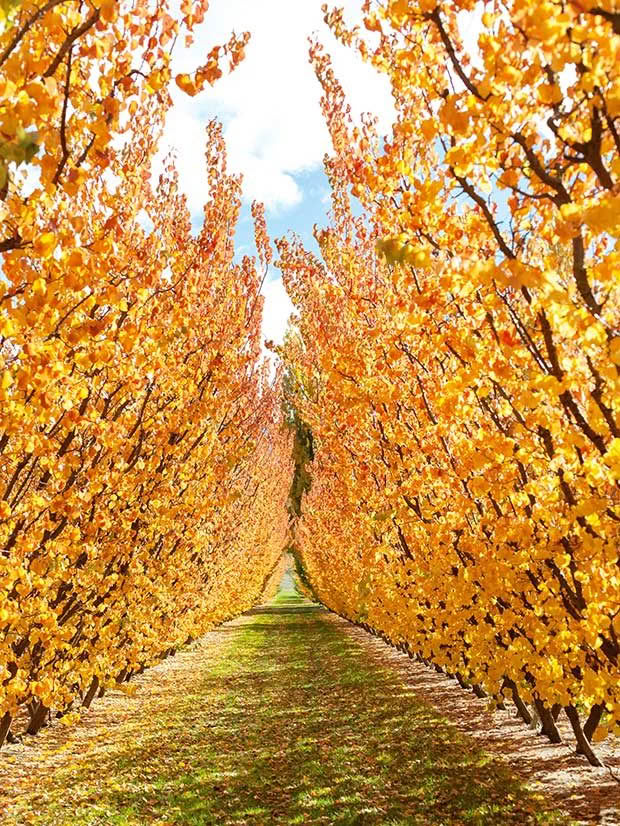
The four distinct seasons each offer exciting promise.
Several decades later when their son Kevin and his then-wife Jane were to be flooded out of a successful export-apricot orchard in the Cromwell Gorge, the government had bought itself quite a fight.
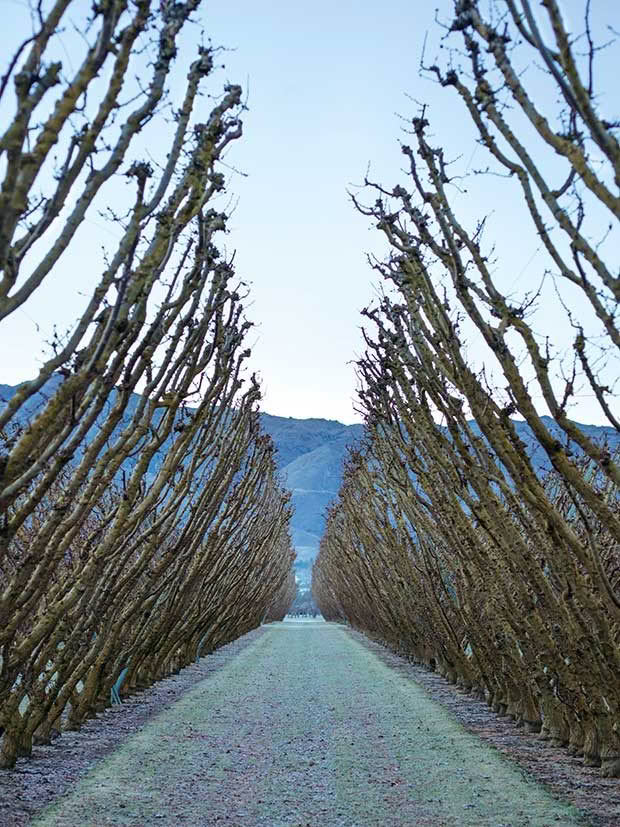
“I sometimes wonder if humans wish their lives away as we are always looking forward to the next season. No two seasons are ever the same and that’s the challenge and excitement of it,” says Kevin.
Today Kevin reminisces only about the loss of his property not the battle which dominated family life for 10 years. Suffice to say, it broke his heart when he drove out in 1989 leaving the orchard into which he’d poured everything for two decades.
It was the finest in the district. Kevin had ascertained this before setting out to buy it by checking with the fruit auction houses about which provided the best quantity and quality of fruit.

His parents were stern with their advice: “Don’t do what we did and develop an orchard from scratch.
Buy the very best orchard you can and borrow the money to do it.” This was a shock to young Kevin as he knew Doris and Leonard had never borrowed a penny in their lives.
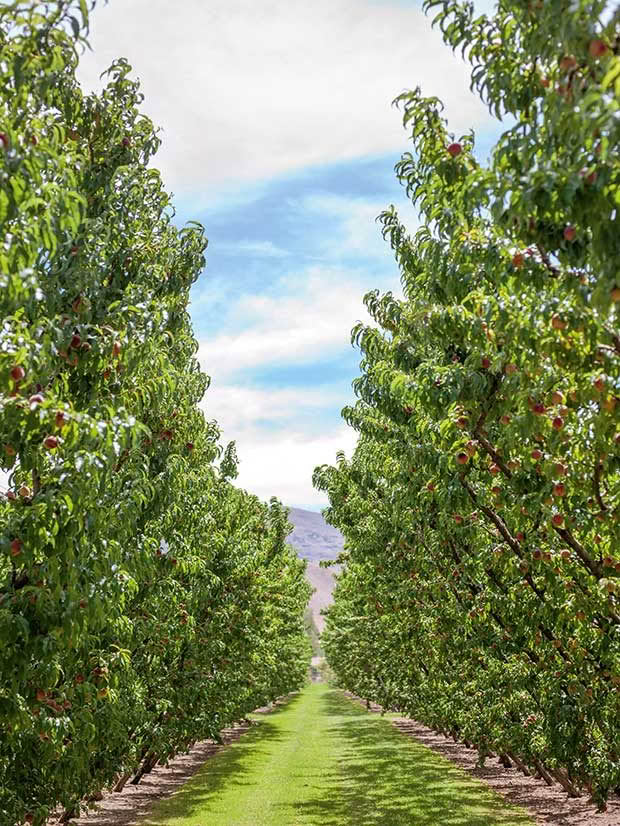
Even though Kevin, still in his early 20s, had already made enough money from his pioneering roadside fruit stall near Mosgiel to build a new home he didn’t have enough to buy an orchard – not by a long shot.
The auctioneers consistently rated the best orchard in Central Otago as that belonging to Ross and Vera Pearson in the Cromwell Gorge. Kevin remembers every minute of the day he and Jane set out to try and buy it.
“It was Boxing Day and the hottest day recorded in the district for many years.” The reaction of the owner? “He laughed in my face to the point where I was embarrassed I’d even asked.”
And the miracle outcome?
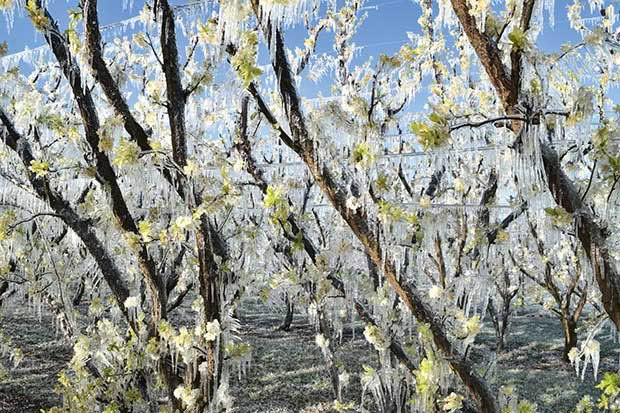
A spring frost, while beautiful, is the worst event in an orchardist’s year as it destroys new fruit.
“After Ross Pearson laughed at me for the temerity of asking to buy the orchard, we asked if we could go for a walk around it anyway. We were gone for half an hour or so and during that time Ross had come down from the ladder from which he was picking apricots, had gone inside and spoken to his wife, Vera. She was having a bad day. It was the height of the season, stinking hot, and her cook had vanished. She was in the hot kitchen having to cook for all the summer staff.
“Vera looked at us and said: ‘So you want to buy an orchard, do you? You poor souls.’ In the short time we walked around the orchard, the Pearsons had decided selling was a possibility but they told us they were too busy to even think about it and to come back after the fruit season was over.”
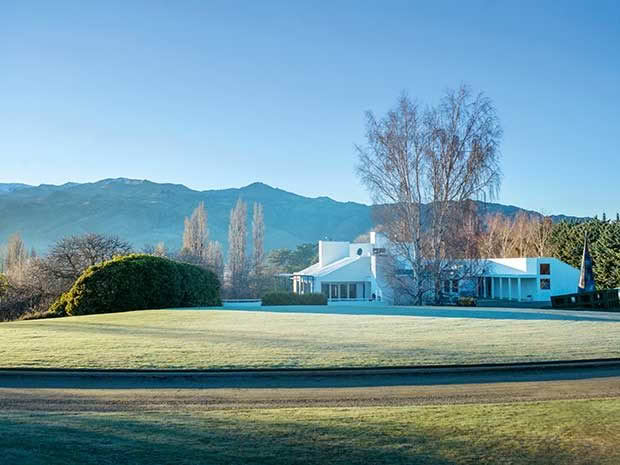
Even though this is not a frost-free area, a gentle slope of the land (from the Pisa Range in the far distance) can help move cold air and stop it settling. Lower areas closer to the main road do get more serious frosts.
It was a pivotal moment in Kevin’s life. Even now, after many years and much success in various businesses and investments, he recalls every minute of that encounter with perfect clarity.
As soon as the season was over, Kevin telephoned Ross Pearson asking if he and his father could come and talk about a potential sale.
Up the gorge they went again, this time on a very cold and windy day. Once the asking price (140,000 pounds) and the structure of the deal was agreed upon, Kevin and his father drove home realizing that they hadn’t set foot anywhere on the property other than the warm kitchen.
The family, now including children Kristin and Mark, didn’t look back until the cloud of that high dam settled over the gorge.
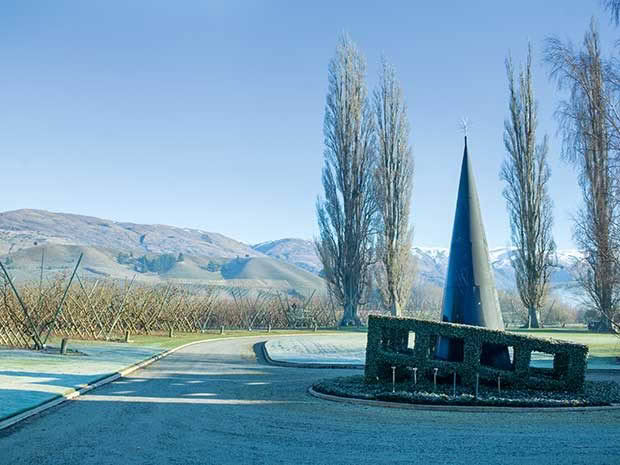
The witch’s hat, in a turning circle on the drive at the entrance to the house, is designed on feng-shui principles to bring good energy into the home.
Hard work is in the Jackson genes.
If Kevin, now trying to retire aged 76, didn’t tell the story of his life with such obvious enjoyment, parts of it might seem Dickensian.
Almost as soon as he was able to walk, he started helping his father and mother in the orchard they had developed on an abandoned Chinese goldmining settlement on the north side of the Clutha River at Earnscleugh after they gave up the lease on Doris’ family orchard.
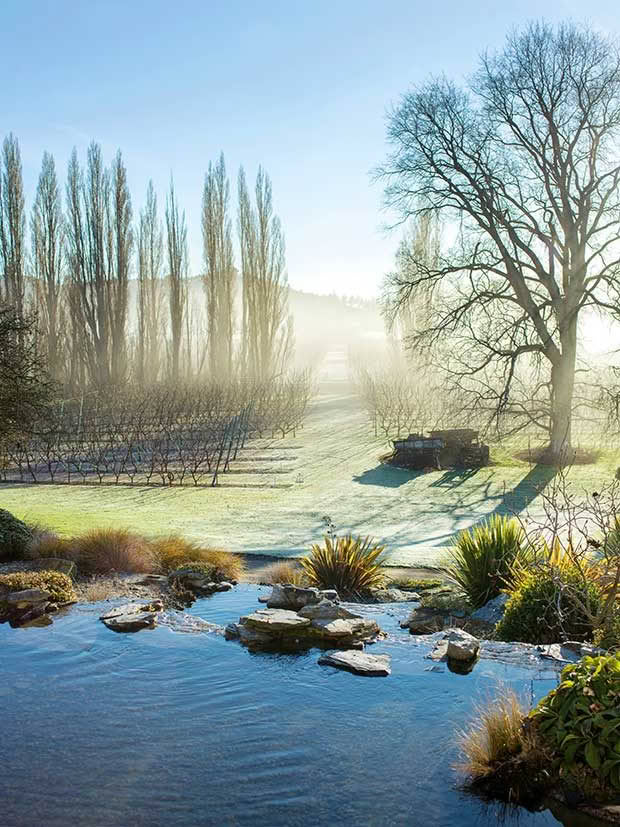
Liquid gold: Water is a prime consideration in Central Otago especially for an orchard operation. Jackson Orchard water comes from a spring rising in the Pisa Range 25km to the west. The 60 percent right to the all-year stream dates back to the region’s goldmining era which pre-dated farming and during which water was also of the utmost importance. The same spring divides into two with the other stream feeding the Roaring Meg hydro-electric station in the Kawarau Gorge.
With a horse-drawn dray, his father collected soil from river floods, shovelling it by hand to bring a few more dredge tailings at a time into the orchard. Kevin was the youngest of three Jackson boys and, like his brothers, when not at school he worked on the land.
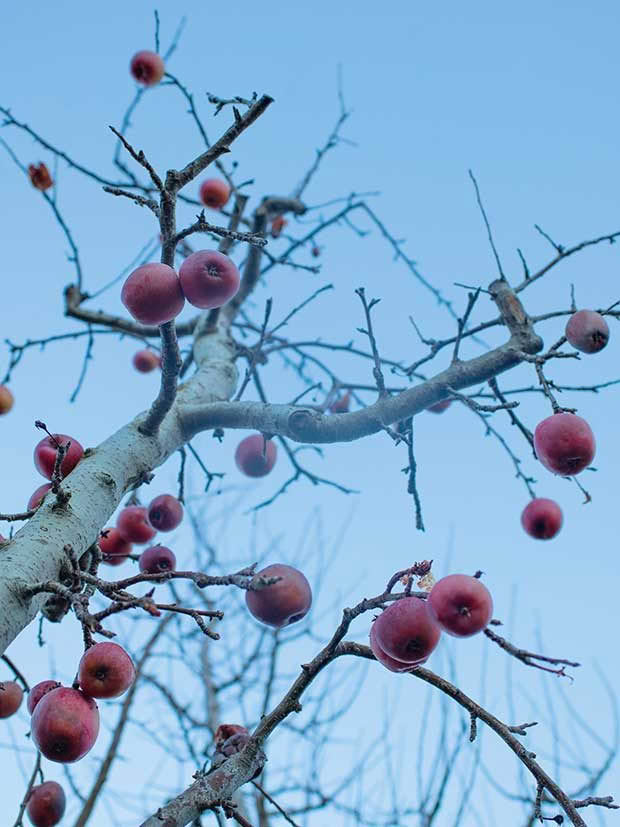
Apples are the last fruit to be harvested. The structures of the Tatura system are visible in the cold dawn as sunrise illuminates the Dunstan mountains to the east. Kevin says the system doubles production: “Off 100 acres [40ha] in a traditional orchard, you get the equivalent of 200 acres [80ha] worth of fruit.”
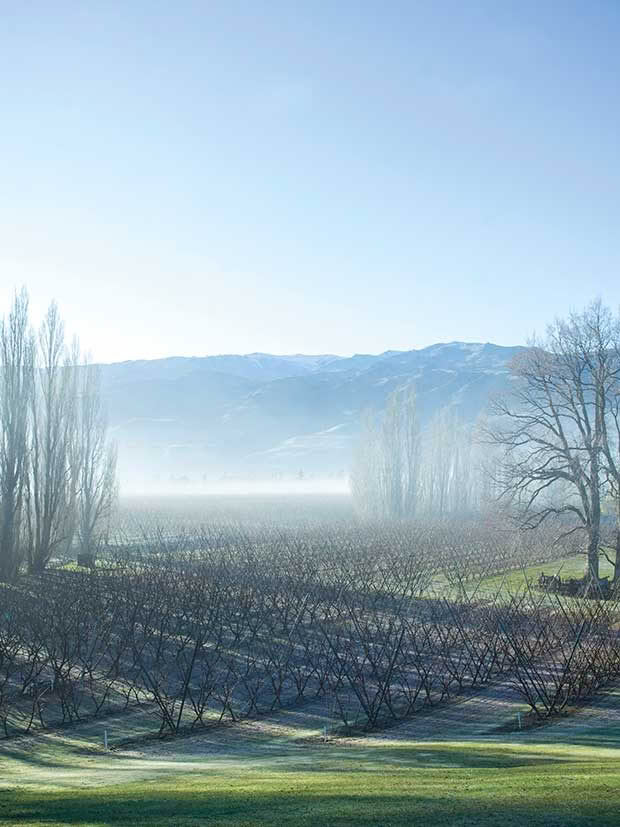
The two horse-drawn drays and cultivator are thought to date from the property’s earliest farmer, William Jackson Barry.
There were no canned tomatoes in those days and our crop went to the market. Picking strawberries and then tomatoes was a big job for the family.”
At the ripe old age of seven, Kevin became the family’s tractor expert. “Initially, my father had a horse called Stumpy and a dray.
To prune his trees, he’d stand a ladder on the dray and Stumpy knew to take a few steps and then stop still, then move a few more steps around each tree so my father could prune.
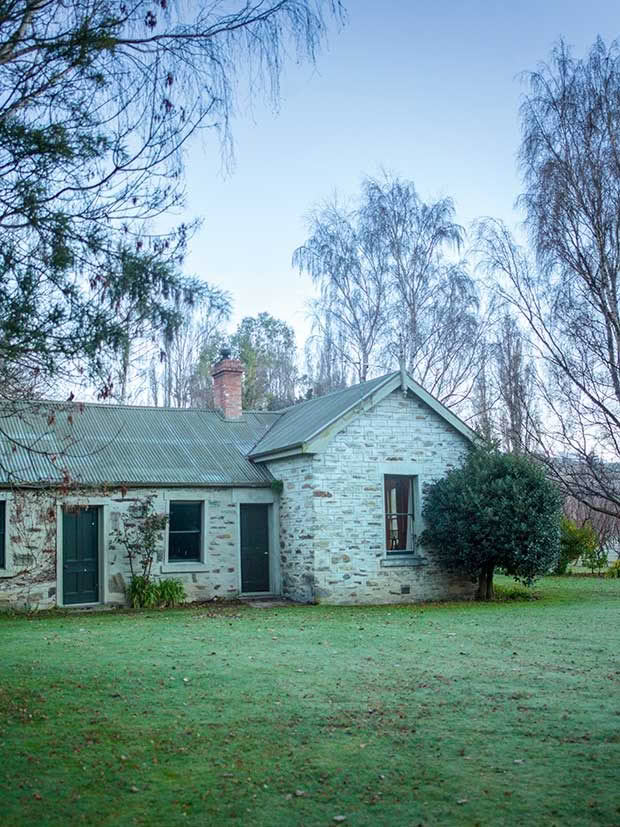
His homestead, now Mark’s home, is built from local schist.
“In 1949 my father decided to buy a tractor. Les Washington, the tractor dealer in Omakau, arrived with a Ferguson TEA and was unloading it just as I got home from school. Les started giving my father instructions on how to drive it, but my father said: ‘There’s no point showing me. Show Kevin.’
So I climbed on the seat, Les showed me how to work it and from that day on I did all the tractor work. I used to look forward to getting out of school because there was always a tractor job.”
It was the first tractor in the district with a three-point linkage, a hydraulic system light-years ahead of anything else. With a few implements his father purchased and modified for orchard work (the spring-tooth cultivator for example), Kevin was off.
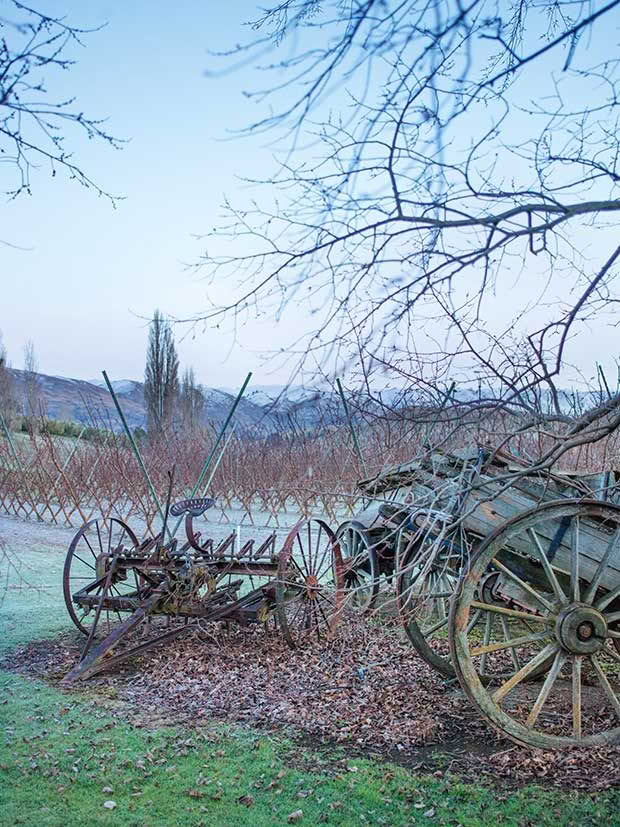
Barry’s colourful life included interludes as a bushranger, goldminer and farmer. He wrote several books but died destitute in the Sunnyside mental asylum.
The tractor made short work of annual jobs such as turning-in green crops and keeping down the weeds in the pre-spray days.
Then Kevin was sent to neighbouring orchards to help-out; most were owned by family or close friends and everyone helped each other.
“When I was eight my father sent me up the Dunstan Road on the tractor with the discs at the weekends to work on other orchards. That was all good; I did that for a few years. Then my father’s cousin Archie Wardrop bought an orchard up Galloway and by the age of 10 I was doing all Archie’s tractor work. It did involve quite a long drive to get there.

“One Saturday, on my way on the Ferguson, the local traffic sergeant stopped his car in front of me and waved me to pull over. I got the impression he wasn’t sure what he was going to do with me, and I wasn’t sure either. He looked at me and said: ‘Where are you going with this tractor?’
I said I was going out to Galloway, and he didn’t say anything for a minute, then he said: ‘Well, I think that’s a wee bit far.’ He knew I’d been going up Dunstan Road most weekends and turned a blind eye but going out to Galloway, about 12 miles away and crossing a narrow bridge, was another matter.
“I asked him what I should do as people were expecting me to work their orchards. He said: ‘Just slowly turn around and go back where you’ve come from.’ I still did the Dunstan Road orchards but not the Galloway ones.”
Hard work is not the only reason Jackson Orchards is one of the largest in the district (employing more than 100 staff in the picking season). A pioneering spirit and Kevin’s ability to manage risk have also played pivotal roles.
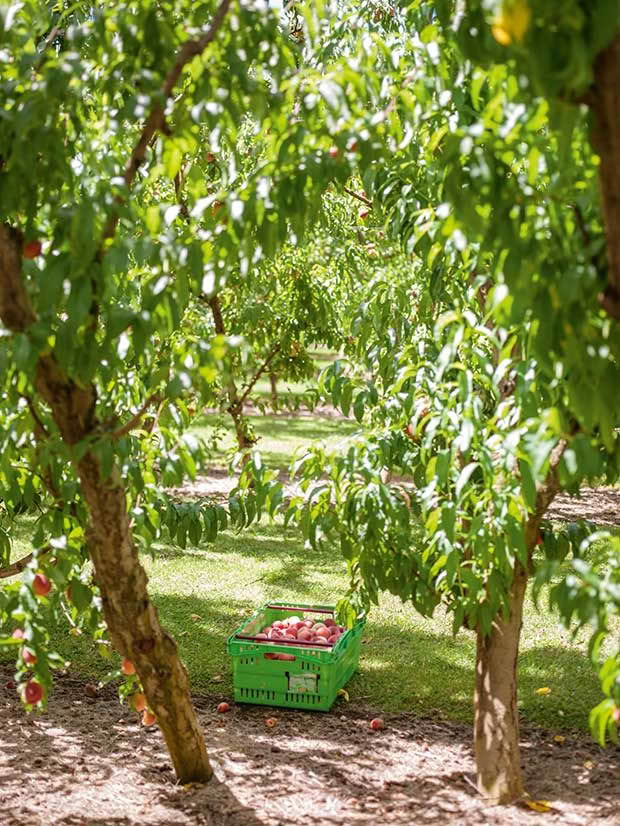
Kevin, keenly aware of how a frost had nearly ruined his parents, did not trust the supposedly frost-free nature of his new Cromwell Gorge orchard. “I couldn’t get my head around it being frost-free, so I put in frost pots just in case. In our second year, the biggest spring frost ever recorded in Central Otago pretty much wiped the apricot harvest.
It was -10 degrees C in Alexandra and -4 or -5 in the gorge. Our return trebled that year and removed our debt worries by and large. And Muldoon’s export incentives, for our apricots going to the Californian market, gave us some very good years.”
However, following the dam flooding the gorge orchard and English-style home into which the family had poured their effort, Kevin found himself doing exactly what, years earlier, he’d promised his parents he wouldn’t do: establishing an orchard from scratch.
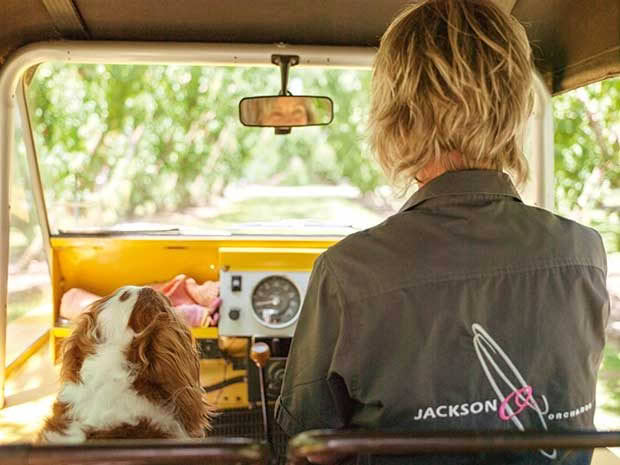
Mark and Kristin were determined to follow in family tradition as as fruit growers so he started again.
The revolutionary Tatura system, on which Kevin established his new orchards, has served the family well. Today’s operation stretches across the two orchards strategically located on the highways into Cromwell.
Mark manages both orchards and the Jackson retail operation while Kristin manages the Freeway retail operation.
TATURA METHOD

This method of intensively planting stone and pip-fruit trees, developed by Australian researchers in the 1980s, requires trellis and wires on which the trees are trained into a sharp V.
While the Tatura method is significantly more expensive to set up (requiring six times the number of trees per hectare and the construction of trellis and wires), it has proved very successful for the family’s two orchards near Cromwell.
After Kevin and his already adult children Kristin and Mark were driven from their much-loved home and orchard in the Cromwell Gorge in 1989 by the creation of Lake Dunstan behind the Clyde Dam, and had committed to continuing the family legacy of orcharding, Kevin pioneered the use of the Tatura method in New Zealand when planting their new 40ha on the Jackson and Freeway orchards.
“I researched Tatura and while it was much more expensive initially, we saved on irrigation costs (for six trees we effectively paid the cost of irrigation for one tree) and we got into production in three years instead of seven.
“The benefits have continued in the 28 years since; closely planted trees are less prone to wind damage, and the fruit is more easily picked by novices as it’s easier to see and accurately assess its readiness for harvest. The only question that remains for me about the Tatura method is why no other orchardist has followed us into using this system?” says Kevin.
Jackson and Freeway orchards, located on the two main highways into Cromwell, are busy in summer with roadside retail ventures serving locals and visitors.
The fresh-fruit ice cream stall is very popular and serves their own fruit as well as berry-based flavours. Julie’s orchard tours are a hit with international visitors. There are 10 full-time staff but during the harvest more than 100 people work on the orchards, many of whom are backpackers.
They grow cherries, peaches, apricots, nectarines, plums, greengages, pears, apples and walnuts.
Most are grown for local consumption but apricots are exported. There’s also an online fruit and giftbox business and orchard tours.
 This article first appeared in NZ Life & Leisure Magazine.
This article first appeared in NZ Life & Leisure Magazine.

